A large fear associated with AI and automation is the loss of jobs or the loss of the human element in services. In optometric and dental care, AI-driven diagnostic tools are beginning to reshape the industry landscape. By integrating advanced machine learning algorithms and deep learning models, these tools enhance diagnostic accuracy and improve patient outcomes. But how do these AI solutions work in harmony with the expertise of professionals and not against it?
At AI Is Here, we focus specifically on helping dental and optometry practices find and integrate the right AI solutions for their businesses without losing that personal touch your patients love about your practice. Here’s how AI-driven diagnostics work in tangent with you to revolutionize patient care.
How Do AI-Driven Diagnostics Work?
AI in healthcare relies on vast amounts of data and complex algorithms to detect patterns, identify anomalies, and assist in clinical decision-making. In both dentistry and optometry, AI-driven diagnostic tools use data from imaging techniques like X-rays, digital scans, and retinal images to detect issues earlier and more accurately. By using specific patient data, it can also help determine individualized care plans.
- In Dental Practices: AI-powered systems can analyze dental X-rays and scans to identify cavities, gum disease, oral cancers, and other dental conditions. These AI tools are trained on large datasets of images, allowing them to recognize patterns in patient scans that may be difficult for the human eye to detect. Tools like Pearl and VideaHealth assist dentists in interpreting imaging results, improving diagnostic speed and accuracy.
- In Optometry Practices: Similarly, in optometry, AI-driven tools are transforming the way optometrists diagnose eye conditions. AI can analyze retinal images and optical coherence tomography (OCT) scans to detect conditions like diabetic retinopathy, glaucoma, and age-related macular degeneration (AMD). These tools can analyze massive datasets in seconds, providing detailed reports that help optometrists make faster and more accurate decisions. For example, Google’s DeepMind has developed AI systems that can diagnose over 50 eye diseases with an accuracy level comparable to that of human specialists, only faster.
Working in Tandem with Professionals
While AI-driven diagnostics offer your practice plenty of benefits, they are not designed to replace you! Instead, these tools are valuable allies, complementing your clinical judgment and expertise. At the end of the day, no one knows your patients better than you do.
- Enhancing Accuracy: One of the biggest advantages of AI diagnostics is their ability to process vast amounts of data quickly, reducing the risk of human error. AI can identify patterns in images or data that may not be immediately apparent. However, the ultimate diagnosis and treatment plan is still determined by the healthcare professional—and you know best. AI simply provides an additional layer of insight to guide decision-making and provide you with information more quickly.
- Streamlining Workflows: AI-powered tools can handle repetitive, time-consuming tasks like analyzing X-rays or retinal images. By automating these processes, professionals can focus on more complex patient care tasks, such as consultations and treatment planning. This frees up your valuable time, improving productivity and allowing your practice to serve more patients or better serve current patients without compromising quality.
The Pros and Cons of AI-Driven Diagnostics
While AI offers numerous advantages for dental and optometry practices, it’s important to acknowledge both its strengths and its limitations. Not every tool is right for every practice. That’s why we always provide you a list of our recommended tools and rank them by best fit for, and goal achievement.
- Pros:
- Increased diagnostic accuracy and early detection
- Faster processing and analysis of imaging data
- Reduced human error and overload
- More efficient workflows, leading to improved patient care
- Cons:
- Can have high upfront costs for acquiring and integrating AI solutions
- Ongoing training and updates required for AI systems
- Potential resistance from professionals or team members who may be skeptical about AI’s accuracy or reliability
What do you think?
Are AI diagnostics tools for you and your practice? AI will revolutionize how you currently provide care for your patients. By working in tandem with professionals, AI enhances the accuracy, speed, and efficiency of diagnoses, allowing practitioners to deliver better care while improving practice workflows. We specialize in helping dental and optometry practices find and implement the right AI solutions, ensuring that these powerful tools are seamlessly integrated into daily operations. We’ll even stick around to deal with some of those cons above, such as ongoing training and updates.
As healthcare continues to evolve, practices that embrace AI-driven diagnostics will stay ahead of the curve, offering cutting-edge care that meets the growing demands of today’s patients. We can help you get there.




